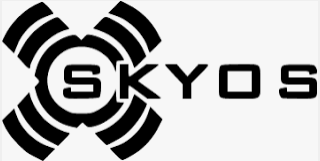Skyos Operating SystemIn this article, you will learn about the Skyos operating system with its history, features, applications, advantages, and disadvantages. What is Skyos Operating System?
SkyOS is a proprietary, graphical, commercial desktop OS for the x86 computer architecture. There were no plans to continue the development of this OS as of January 30, 2009. Thus the development of this OS was stopped. On the SkyOS website, developer Robert Szeleney announced the launch of a public beta in August 2013. It enables public users to obtain a SkyOS Live CD for testing and installing the operating system. SkyOS utilizes its own "SkyGI" GUI system, which has a full C++ API. It is not based on either X or XFree86 and has no connection to any of these operating systems or their derivatives. There is certain GPL-compliant software included with SkyOS, such as Firefox. SkyOS employs the OpenBFS-based SkyFS file system, which can also read FAT16/FAT32, BeFS, and ext2/ext3. SkyOS can play a wide range of media files, including videos, DVDs, Audio CDs, and MP3s. The ISS (Integrated Sound System) may also be used to create complex audio apps. It can play several audio streams simultaneously, modify the sampling rate, and employ effect filters. It also offers SkyKruzer, a KHTML version that enables users to browse the WWW. History of the Skyos Operating SystemSkyos operating system development was started in 1996. The first version of Skyos was released in December 1997. The skyos OS was freely available before the release of version 4. x. Customers needed to pay US$30 to gain access to beta versions starting with the SkyOS 5 development of beta in 2003. When SkyOS upgraded its graphics subsystem in 2006, it included support for desktop compositing with double buffering and transparency. SkyFS was a new file system based on OpenBFS, which SkyOS adopted in 2004. It also switched to ELF binaries at the time. The last Skyos beta version (6947) was launched in August 2008, and there was no status update for many months. The skyos OS was mostly the creation of one person, Robert Szeleney, because it became more challenging to install additional device drivers. The tech press believed that switching to open source was the wisest course of action for SkyOS, given the lack of progress under Robert Szeleney. Szeleney attempted to circumvent the driver shortage by employing a new kernel based on Linux or NetBSD, and he claimed some progress in this area, but development has stalled since. SkyOS's website vanished in 2013, and the final public build from August 2008 was made available for free shortly after. Features of the Skyos Operating SystemThere are various features of the skyos operating system. Some features of the skyos operating system are as follows: 1. Graphics and GUI It has a graphics subsystem that allows desktop compositing, such as transparency and double buffering. SkyOS GUI also supports mouse gestures on a system-wide basis. 2. Fast Searching It supports real-time file content query searches with several keywords and file and program indexing. 3. Kernel SkyOS is a Unix-like OS with a monolithic kernel. It also supports multiple several and symmetric multiprocessing. 4. SkyFS It is the fork of the OpenBFS file system. It may also run by FAT32/FAT16/FAT12 and ISO 9660 file systems. 5. Networking SkyOS comes with a complete TCP/IP stack. This TCP/IP Stack implements all essential protocols such as Ethernet, IP, UDP, TCP, ARP, ICMP, and a Berkley-compliant socket interface on each tier. 6. User-friendly One of SkyOS's most significant aims is to be user pleasant. It includes a consistent user interface for all apps and an easy-to-use and traverses desktop. 7. Internet SkyOS has two Web Browsers: SkyKruzer, a KHTML version, and Links. You can quickly surf the internet and download things with this browser. Porting ApplicationsMost of the command-line apps that were created to be built with the GNU Toolchain may be converted to work on SkyOS with little to no changes. Several frameworks for building apps are available in SkyOS (such as Mono port). Ported apps include GIMP, Mozilla Firefox, Nvu, Mozilla Thunderbird, and AbiWord. There was a monetary incentive for porting apps because the SkyOS community voted on preferred apps and donated to developers. ReceptionAlthough SkyOS has many unique features, one of its limitations is its restricted application and hardware compatibility. Szeleney worked primarily on kernel and driver upgrades, so he could not keep up with new devices. It was one of the reasons the project's progress was halted. Ultimately, the operating system could not grow beyond a small but dedicated user community. Apart from a brief period of open source, the OS was proprietary, with a business model centred on paid beta-testing. It caused considerable controversy since SkyOS developers were accused of using open source software without authorization. Although there was no hard proof of any misconduct, the OS's reputation was damaged.
Next TopicBest Operating System for Raspberry Pi
|
 For Videos Join Our Youtube Channel: Join Now
For Videos Join Our Youtube Channel: Join Now
Feedback
- Send your Feedback to [email protected]
Help Others, Please Share










